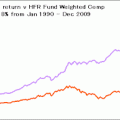Artificial Intelligence (AI) is an umbrella term that denotes a series of programs and algorithms designed to mimic human intelligence and perform cognitive tasks efficiently with little to no human intervention.
AI, in its various forms and applications, can analyze large volumes of data generated during the entire course of our increasingly digital existence and identify trends and exceptions to help us develop better insights and make more effective decisions.
Unlike other next-big things, such as nuclear fusion, quantum computing, and flying cars, which are practically (and literally) pies in the sky, AI has been around for quite some time, influencing how we shop, drive, date, entertain ourselves, manage our finances, take care of our health, and much more.
However, the technology came into the limelight late last year with the release of ChatGPT, which in its own description, is “an AI-powered chatbot developed by OpenAI, based on the GPT (Generative Pretrained Transformer) language model. It uses deep learning techniques to generate human-like responses to text inputs in a conversational manner.”
ChatGPT, which took the world by storm by signing up 1 million users in five days and amassing 100 million monthly active users only two months into its launch, is one of the several use cases of generative AI. It is the subset of algorithms that creates and returns content, such as human-like text, images, and videos, based on the user’s written instructions (prompts).
Given its massive importance, it’s hardly surprising that Zion Market Research forecasts the global AI industry to grow to $422.37 billion by 2028. Hence, this field has understandably garnered massive attention from investors who are reluctant to miss the bus on such a watershed development in the history of humankind.
Although OpenAI, the creator of ChatGPT, is not a publicly listed company, Microsoft Corporation (MSFT) has bet big on the company with the announcement of a multiyear, multibillion-dollar investment deal. Here’s CEO Satya Nadella discussing, at the World Economic Forum held in Davos this year, how the underlying technology would eventually be ubiquitous across MSFT’s products. The process has already begun with updates to its Bing search engine.
However, more recently, the company which made headlines when its stock got its moonshot due to the widespread public interest in AI is NVIDIA Corporation (NVDA). Post its earnings release on May 24, the Santa Clara-based graphics chip maker has stolen the thunder over the past week by becoming the first semiconductor company to hit a valuation of $1 trillion.
NVDA’s A100 chips, powering LLMs like ChatGPT, have become indispensable for Silicon Valley tech giants. To put things into context, the supercomputer behind OpenAI’s ChatGPT needed 10,000 of Nvidia’s famous chips. With each chip costing $10,000, a single algorithm that’s fast becoming ubiquitous is powered by semiconductors worth $100 million.
Earlier this year, Advanced Micro Devices, Inc. (AMD) made history by surpassing Intel Corporation (INTC)in terms of market cap for the first time ever. Chair and CEO Dr. Lisa Su is widely credited with the turnaround and transition from being widely dismissed due to performance issues and delayed releases to being the only company in the world to design both CPUs and GPUs at scale.
According to Dr. Su, Data Center is the most strategic piece of business as far as high-performance computing is concerned. AMD underscored this commitment with the recent acquisition of data center optimization startup Pensando for $1.9 billion.
AMD has made its ambitions to capitalize on the AI boom loud and clear with the launch of MI300X (a GPU-only chip) as a direct competitor to NVDA’s H100. The chip includes 8 GPUs (5nm GPUs with 6nm I/O) with 192GB of HBM3 and 5.2TB/s of memory bandwidth.
AMD believes this will allow LLMs’ inference workloads that require substantial memory to be run using fewer GPUs, which could improve the TCO compared to the H100.
Lastly, the company aims to address the growing AI accelerator market, projected to be over $30 billion in 2023 and potentially exceed $150 billion in 2027.
The Catch
While the chip and software companies at the cutting edge of the AI arms race have contributed to a melt-up in the markets that have seen the Nasdaq Composite gain more than 36% year-to-date, investors would be wise to be aware of the limitations and loopholes of investing in technology before FOMO drives them to inflate a “baby bubble” growing in plain sight.
LLM-based generative AI chatbots are auto-complete on steroids trained on vast data. While they are really good (and continually getting better) at predicting what the next word is going to be and extrapolating it to generate extensive literature, it lacks contextual understanding.
Consequently, the algorithms struggle with nuances such as sarcasm, irony, satire, analogies, etc. This also leads to the propensity to “hallucinate” and generate responses even if those are factually and logically incorrect.
Moreover, since, in the words of Morgan Housel, “things that have never happened before happen all the time,” it could be challenging for any AI tool to deal with tails, exceptions, and outliers in the shifting sands of business, economy, and society.
Even AAPL co-founder Steve Wozniak, who knows more than a thing or two about technology, agrees with the ‘A’ and not the ‘I’ of Artificial Intelligence.
Stick to Basics
Just as we have learned during the dot-com, cryptocurrency, real estate, and numerous other bubbles through the ages, markets can stay irrational longer than investors can stay solvent.
Big tech mega caps (mentioned earlier in the article) are involved in providing the infrastructure and computing horsepower required to make the data and power-hungry AI algorithms work. Moreover, since AI is well-embedded into their business operations and market offerings and AI as a service is (still) a small portion of their revenue, concentration risks can be more easily managed.
Therefore, rather than getting too carried away and stretching a worthwhile and useful innovation to frothy excesses with unrealistic expectations, it could be wise and safe for investors to add to their positions in the aforementioned stocks on dips.




